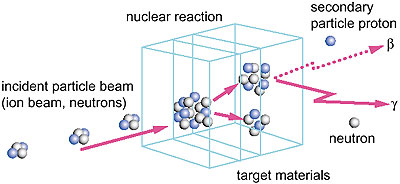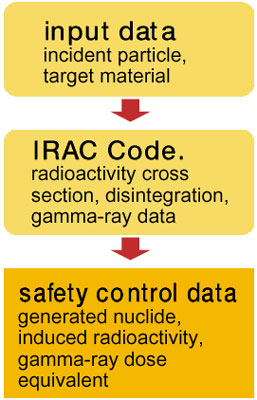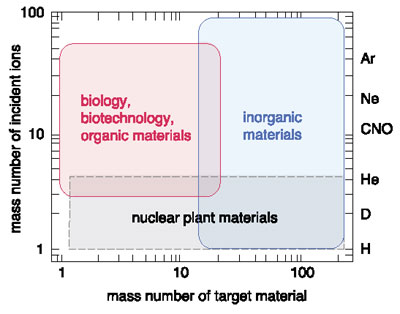Recent technical progress with particle accelerators has made it easy to generate energetic ion beams and secondary neutrons. Research applications for ion beam irradiation are expanding broadly into the fields of materials science, medicine, biotechnology, and neutron science. Since radioactivity-inducing nuclear reactions occur when energetic ions and neutrons hit target materials and accelerator components, appropriate radiation safety control is required in order to minimize radiation exposure to personnel and the amount of radioactive waste. To conduct accelerator beam experiments safely and effectively, basic information about induced radioactivity and radionuclides produced should be available to accelerator users in the planning stage of such experiments, since induced radioactivity depends on the accelerated particle, acceleration energy, the material irradiated and experimental conditions.
In conventional practice, availability of the foregoing resource has not been required, because accelerator users were mostly nuclear scientists and the range of target materials was rather limited. In recent years, however, a number of non-nuclear users are conducting accelerator beam experiments with an extremely wide variety of target materials. Therefore, an induced radioactivity calculation system which can be easily accessed without expert knowledge is now essential.
The computer code system IRAC has been the first such calculation system to be developed. It allows us to easily calculate the radioactivity induced by ion beam irradiation over an energy range of several to several hundred MeV, where one only needs to provide the input parameters of the incident particles employed, and data on the target material (Fig. 9-14). It plays an especially important role for heavy ion beam irradiation, where the availability of induced radioactivity information from measured data is very limited.
The calculation code system has been successfully applied to an open system of facility management such as the screening of experiment proposals, the experimental programs, and safety control in the ion beam irradiation research facilities TIARA. The code system has also been applied to a wide range of research fields in accelerator science communities both inside and outside of the country. |



